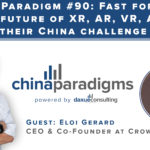AR industry in China: [Interview] Are smart glasses going to replace our everyday life devices like TVs and phones?
LingxiAR shows how a startup can lead in the exploding AR industry in China
Augmented Reality (AR) is a futuristic technology made available today, and this raises many important questions – so we at Daxue Consulting interviewed one of the co-founders of LingxiAR (灵犀AR), a two-year-old startup that is already leading the market with cutting-edge technology in the AR industry in China.
At Daxue Consulting, we thrive to be always up-to-date on the latest tech trends in China. With the rise of new technologies, we collect insights to be the optimal partner for companies and startups in China in every industry. Without doubt, AR is one of the top-trending industries worldwide. This exciting new technology gives companies and consumers the opportunity to engage and entertain through devices like smart glasses, head-mounted displays and heads-up displays. In manufacturing, AR devices could be devised to smoothen the business workflow. Meanwhile in healthcare, AR glasses will potentially save lives with surgeons being able to have a complete view of a patient’s vitals while keeping their hands free to operate effectively. Even at us here, at Daxue Consulting, are looking to use Virtual Reality (VR) and AR technologies for our research.
As of 2017, there are already an estimated 200,000-400,000 AR devices sold worldwide. The market is expected to grow with an impressive CAGR of 80.8% from 2016 to 2024 to being worth US$ 165 billion, according to a leading consulting firm for innovative technologies.
[ctt template=”2″ link=”MkO78″ via=”yes” ]In 2016, US$ 2.6 billion were invested into VR/AR.[/ctt]Daxue Consulting wants to provide a better understanding of this market and show how a startup in China challenge tech giants like Sony (索尼) or Epson (精工愛普生) and become a global leader in the AR industry. To learn more, we spoke to Michelle Fang (方雪阳), one of the four co-founders of LingxiAR. Founded in August 2015, it is the only company in China and one of only two in the world designing ultra-thin optical lenses that enable AR glasses to function like traditional bifocals. Over the course of this interview, we discuss the potential of AR glasses, getting funding a startup, intellectual property (IP), how to recruit a team of engineers to create a prototype and develop cutting-edge technology and the outlook for the AR industry in China and the world.
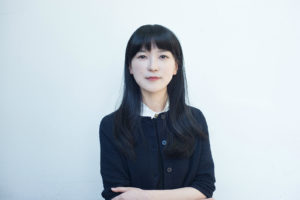
Michelle Fang (方雪阳), co-founder of LingxiAR (灵犀AR) manages PR, marketing, sales, fund raising and strategy for the brand. Photo credit: LingxiAR.
In your own words, how would you describe AR glasses and how LingxiAR products fit into the US$ 640.2 million+ global AR market?
Michelle Fang: “AR glasses are “smart” glasses. They change the way you see by showing holographic images and combining virtual objects with reality for the viewer. The industry is still at a very early stage. Therefore, there are still a lot of limitations. For example, in terms of technology, the current leader “HoloLens” from Microsoft (微软) is too big and not user-friendly. It is a helmet rather than glasses and the view is too narrow. LingxiAR focuses on the basics, so our clients are able to produce regular-sized glasses instead of a helmet, one that also offers a wider view. We provide the underlined technology for AR devices and sell the technical solution rather than the whole product.
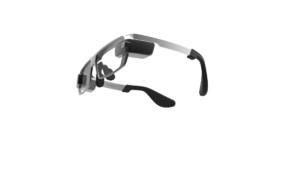
The first prototype of smart glasses with ultra-thin optical lenses AR光学方案 AW60 from LingxiAR. Photo credit: LingxiAR.
The Asia-Pacific AR industry is expected to grow 80% year-on-year until 2024 and get highly competitive. How are you going to differentiate your AR glasses from other products in the industry?
Fang: Our product, which is a slim, transparent optical lens, is differentiated in two ways. Firstly, thanks to our cutting-edge technology, we’re one of the two companies in the world next to the Israeli startup Lumus that can produce ultra-thin optical lenses. Secondly, we have a high level of customer service, providing product reference designs, image-processing software and other design consultancy services to our clients.
How large is your company now?
Fang: In total, our team consists of 20 people. My three fellow co-founders are all technical engineers and the whole R&D team consists of ten engineers. As for myself, I’m responsible for developing long-term as well as short-term strategies, fund raising, sales, marketing, and PR.
What kind of engineers did you have to recruit develop your cutting-edge product?
Fang: We look for highly motivated young engineers with strong learning capabilities. Since we’re working in a new field, research capabilities and problem-solving skills are more important than past experiences.
How did you recruit the best available engineer and researcher talent for your company?
Fang: Generally we approach potential candidates ourselves. For each key role on the research team we spend a long time convincing them and we offer appealing packages and stock options.
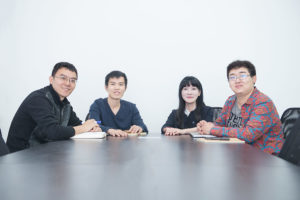
LingxiAR’s founders. From left to right, Guanyi Yan (闫冠屹), Yu Zheng (郑昱) Michelle Fang (方雪阳), Yaozhang Wang (王耀彰). Photo credit: LingxiAR.
Attractive employee packages require funding. How did you fund your startup?
Fang: Our CEO ZhèngYù (郑昱) invested some of his own money. However, we mostly opened rounds of venture funding and are currently closing the third round.
When investing with personal capital in China, what kinds of capital did your CEO use?
Fang: Personal savings and loans.
US$ 2.6 billion was invested into VR/AR in 2016. How do you secure your piece of these large investments in China?
Fang: As one of the partners, during the fund-raising cycle I participated in road-shows, actively contacted investors, and met with investors almost on a daily basis. Spreading the word through my network brings me a lot of interested investors as well.
How did you know who to contact? Did you already know who was looking for investments in your network or did you research potential investors yourself then contact them? Did some even contact you?
Fang: It happens both ways. Investors in China are actively looking for good projects. We make the connection via open platforms, media, friends as well as networking events. In any case, I’ll provide a highly refined presentation, highlighting our team, competitive advantage as well as short-term and long-term strategies. Having a long-term relationship with individual investors very much accelerates the process.
In what way are the investors involved in your operations?
Fang: Our investors let us operate pretty independently.
With the investments rolling in you could start developing your first prototype. How long did it take to create the first functioning prototype?
Fang: Our R&D team, consisting of ten people, realized they could develop a first functioning prototype after six months of research and development.
Can you tell us how much it cost and what were different aspects of these costs?
Fang: It is hard to break down the costs. Developing a prototype involves procedure testing costs and fixed assets investments, for instance.
Since you established your company, how have R&D costs changed over the years? How much in a year do you spend on R&D now?
Fang: Currently, we have R&D costs in the millions of RMB each year. This is only expected to grow as we’re opening new frontier research projects.
After the successful development of your first prototype in September 2015, you started manufacturing. LingxiAR decided to manufacture in-house. What were the reasons and was it cost-effective?
Fang: This year it is not efficient. Manufacturing in-house in our workshop means that we have key procedures in-house and are outsourcing the rest. We’re doing this for 3 reasons:
1. To protect our technical secrecy and maintain a high barrier of entry. In this way all the designs, procedures and know-how are kept to ourselves.
2. To support R&D. The manufacturing workshop shortens the iteration cycle by 60%.
3. We plan to break even on the workshop in the next year.
Can you describe the facilities you’ve built to manufacture in-house?
Fang: Initially, we processed in our lab where we have a minimum operating unit consisting of few equipment and skilled engineers. As we expanded our capacity we have built a small workshop of 300 ㎡in Zhejiang province (浙江省).

Members of LingxiAR’s R&D team manufacturing the ultra-thin optical lenses. Photo credit: LingxiAR.
What kind of machinery do you use and where did you get them from?
Fang: We use self-designed and customized machines and also purchase from outside too.
Earlier you mentioned that the main reason for keeping key procedures in-house is to protect your technology and competitive advantage – hence, what role does IP play in your business?
Fang: IP is at the core of what we do at LingxiAR. Alongside manufacturing in-house, intellectual property rights protect our product from being copied and are the reason why we are, as of today, the only one in China providing ultra-thin optical lenses.
Which IP rights do you apply in China to prevent your products from being copied?
Fang: We have filed more than 30 patents and also obtained trademarks and software copyrights.
How much do you spend on IP and how do you register these different types of patents’?
Fang: We have spent more than 100,000 RMB on IP, mostly on domestic and international patents. We work with a professional IP consultancy on patent strategies and registering.
Regarding the AR industry, how do you predict the market demand and can you define the current market size?
Fang: Currently, we are using other companies’ forecasts, such as from Apple (苹果) or Microsoft, to predict the demand. We estimate the market size to be about 200,000 to 400,000 units this year.
[ctt template=”2″ link=”3c8A1″ via=”yes” ]“I expect AR glasses to be a parallel product to smartphones“ – Michelle Fang [/ctt]Can you tell us who your customers are? In general, which industries can make a use of AR glasses?
Fang: Our clients are from various industries, including military, healthcare, security, and manufacturing sectors. AR glasses will serve as a personal assistant for operators to have access to key information in real-time and hands free.
What is your current revenue? Are you making profit already?
Fang: Currently our revenues are small and we have not made profit yet.
Looking into the future, how do you plan to cope with emerging competitors?
Fang: We plan to cope in three ways:
1. Talent. Top optical researchers are scarce resources. We plan to attract many of these talents as we’re a rising startup in a revolutionary industry, and are willing to give appealing packages and stock options.
2. Barrier of entry. Over the years we’ve built up a significant barrier of entry, from theory to processing techniques that other firms would have to surpass to compete with us directly. Our designs and know-how are kept secret in our factories.
3. Client relations. We do not only provide optical modules, but work closely with industry clients in their product development and manufacturing processes. We believe we would be hard to be replaced for these clients. We’re also working on customization projects with potential 2C clients, securing exclusive partnerships.
Finally, how large do you expect the market to become once AR glasses are sold B2C?
Fang: AR glasses will be the next computing platform. We believe that the B2C market will grow to hundreds of millions of units because they can replace a lot of products. A few years ago, it was all about connecting different devices such as TV, computer, cellphone, etc. Our vision is that the customer can have everything in one with AR glasses. However, I expect AR glasses to be a parallel product to smartphones.”
This interview with Michelle Fang from LingxiAR shows how a startup in a revolutionary industry can build a global competitive advantage. By recruiting the best available engineers and researchers and developing a prototype from scratch in-house, LingxiAR now has established a market presence in a new market. Core technologies are manufactured in-house and protected through large investments into IP in China as well as internationally.
The interview also illustrates the great potential of AR glasses. While companies already see advantages, e.g. in manufacturing, of combining virtual objects with the reality, it will be interesting to see what the future holds for the B2C market.
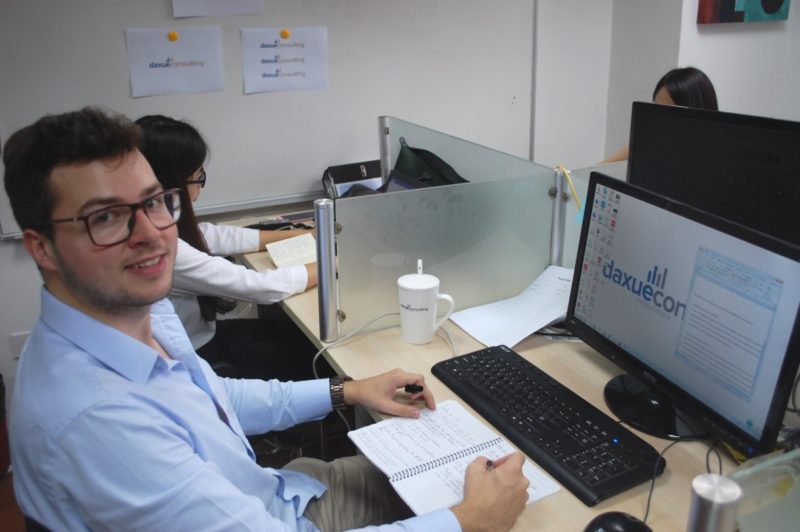
Daxue Consulting’s team in Shanghai’s office. Photo credit: Daxue Consulting.
Contact us here to get more information about the AR industry in China or to discuss with our project managers how to create your competitive advantage in China. Not in the AR industry? Just write us an email to dx@daxueconsulting.com and we will find the best solution relating to your industry and requirements.
Follow us on Twitter to learn more about China:
How innovations in #China will change the world: From Artificial Intelligence to #mpayment https://t.co/Ne76zybkJF pic.twitter.com/ZlvQq7fz7q
— Daxue Consulting (@DaxueConsulting) August 18, 2017


![AR industry in China: [Interview] Are smart glasses going to replace our everyday life devices like TVs and phones?](../wp-content/uploads/2017/09/Main-visual.jpg)





